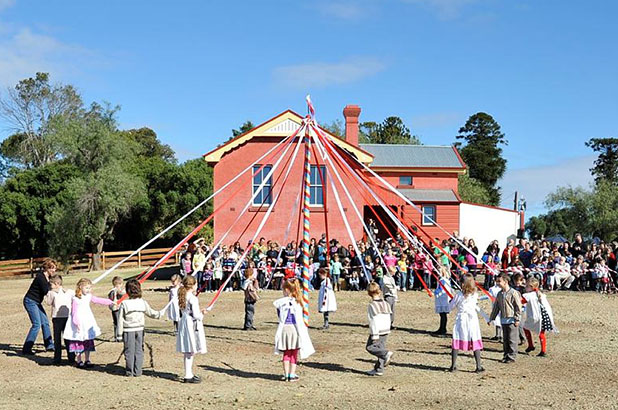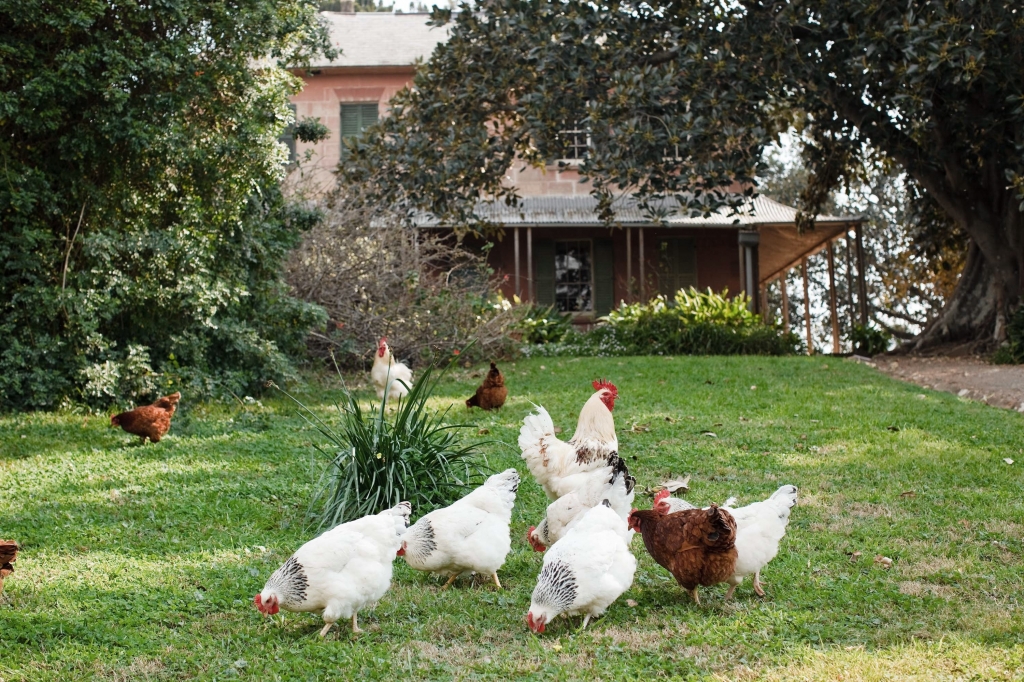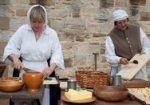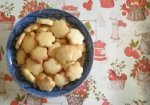There’s certainly a lot of activity in Sydney Living Museums this month, with an appetising menu of programs and events! May brings us Mothers’ Day with a special invitation for Mums on the day and a lovely biscuit recipe from Meroogal’s Auntie Tottie.
We get a bit of wind in our sails with the Rocks Windmill project events with a walking tour of Millers Point on Sunday with Anna Cossu and a talk inside the windmill itself with yours truly, on wheat and bread, and their significance in the early years of the colony.
Rouse Hill House and Farm has lots of food focused activity this month. For generations, the Rouse family grew and produced food for income and for domestic enjoyment. Earn your tucker is a wonderful experience for junior foodies while Colonial gastronomy: farm to fork takes a fascinating look at traditional farming practices and home-grown cooking at Rouse Hill House & Farm, where food was central to family life.
Farmer James Griffiths takes us on a trail of rediscovery, explaining traditional food-production practices from surviving out-buildings on the estate and we investigate what was on the menu from tell-tale splodges on the pages of the family’s nineteenth-century cookbooks. The tour includes a peek into the Rouse family kitchen and ends with refreshments inspired by the family recipe collection.
And this weekend, our next Vintage Sunday: Gothic takes a macabre twist with an early 19th century Gothic theme at Vaucluse House. The house will be dressed in ‘mourning garb’, take a tour of the Wentworth family mausoleum and spend some time in the colonial kitchen where you can make funeral biscuits.
Vaucluse House funeral biscuits
Ingredients
- 250g butter (at room temperature)
- 120g caster sugar
- 4 teaspoons caraway seeds
- 3 teaspoons ground cardamom
- 280g flour
- 80g rice flour
- pinch salt
Note
This recipe was devised for a Gothic themed Vintage Sunday at Vaucluse House. Nineteenth-century funeral biscuits were sweet, spiced confections offered by the bereaved to those who came to view the corpse, attend the burial service and/or offer condolences. This was a genteel echo of earlier, earthier rituals such as employing sin-eaters (to absolve the sins of the departed), eating corpse cakes (to absorb their virtues), and sharing 'arvel' bread beside the coffin (to honour the heir).
It was fashionable, and a sign of status, to order your funeral biscuits from a specialist supplier rather than making them at home. Grand households like that at Wentworth Woodhouse in Yorkshire, the seat of William Charles Wentworth’s kinsman Earl Fitzwilliam, dispensed delicate sponge fingers the size of finger buns. Commoners and colonials tended to prefer small shortbread rounds embossed with graveyard symbols. Either way, the recipe always included richly aromatic spices whose fragrance – like the heavily scented flowers that filled houses of mourning and were draped over coffins – helped to offset the less welcome aromas emanating from the deceased.
This recipe is based on a classic shortbread mix of one part sugar, two parts butter and three parts flour. The rice flour adds nuttiness and a sandy texture. As a finishing touch, wrap each biscuit individually. The Victorians typically used a death notice, a Bible verse or a maudlin poem.
Directions
| Cream the butter and sugar until pale and fluffy. Add the cardamom and caraway seeds. | |
| In a separate bowl, sift together the flour, rice flour and salt. | |
| Mix the dry ingredients into the creamed butter and sugar until the dough forms into a ball. If it does not bind, add a little iced water (no more than 2 teaspoons). Cover the dough in plastic wrap and refrigerate for 20 minutes. | |
| Preheat the oven to 150° C. Line a baking sheet with non-stick baking paper. On a floured surface, gently roll out the dough until it is 1cm thick. Cut out 6cm rounds with a pre-floured scone cutter, and space them well apart on the baking sheet. Impress a cross shape into the top of each biscuit. | |
| Bake for 20 minutes, or until the biscuits have just begun to turn golden. Allow to cool completely. Once cold, wrap each biscuit individually with paper. | |
| Cook's tips: Buy whole cardamom pods and grind them as required. The less you handle and work the dough, the lighter your biscuits will be. Use a food processor for steps 2 and 4. | |
| Recipe and research content by Susan Bee © Sydney Living Museums | |




 Print recipe
Print recipe

